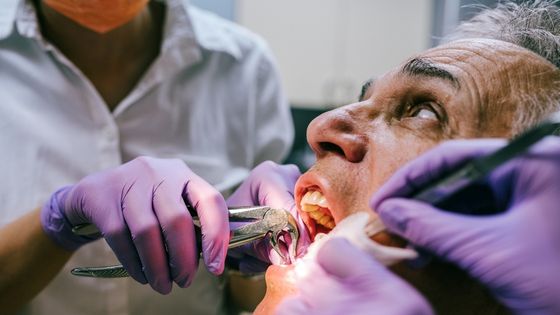Tooth extraction is the removal of a tooth from the mouth. It is a standard dental procedure for several reasons, including overcrowding, tooth decay, and injury. Tooth extractions are performed by a general dentist or experts from the Gallup Dental group oral surgeon, depending on the extraction’s complexity.

However, this is just the tip of the iceberg! There are multiple aspects associated with the dental treatment procedure. So continue reading as we explore the different aspects of tooth extraction in the following sections of our blog.
Cost Structure Of Tooth Extraction
The average cost of a simple extraction is $75-$200, while the average cost of a surgical extraction is $225-$600. However, these prices do not include additional costs, such as anesthesia or post-operative care.
Most dental insurance plans cover at least a portion of the cost of tooth extraction. It is a good idea to check with your insurance company to check your schedule. Click here to find teeth extractions near me.
If you do not have dental insurance or if your insurance does not cover the cost of a tooth extraction, there are several options for paying for the procedure:
- Payment plans: Many dentists offer payment plans that allow you to pay for the procedure over time.
- Dental financing: Several companies offer financing for dental procedures, including tooth extractions. These companies provide loan options with flexible repayment terms.
- Dental savings plans: Dental savings plans are an alternative to dental insurance. These plans offer discounted rates on dental procedures, including tooth extractions.
- Discount dental plans: Discount dental plans offer discounted rates on dental procedures, including tooth extractions. These plans are typically less expensive than traditional dental insurance.
Steps Involved In Tooth Extraction
Before a tooth extraction, the dentist will numb the area around the tooth with a local anesthetic. This will help to minimize any pain or discomfort during the procedure. The type of anesthetic used will depend on the location and complexity of the extraction.
There are two types of tooth extractions: surgical and standard. A simple extraction is performed on a tooth that is visible in the mouth and can be removed with forceps.
On the contrary, a surgical extraction is more complex and is performed on a tooth that is not visible in the mouth or is impacted (stuck in the gum or bone). Surgical extractions may require cutting the gum tissue and removing bone to access the tooth.
Post the tooth extraction; the dentist places a gauze pad in the socket to help control any bleeding. Following this, patients need to bite down on the gauze for about 30 minutes to help stop the bleeding. The dentist may also place a few stitches to help close the wound.
It is normal to feel some pain and discomfort after tooth extraction. The dentist will prescribe pain medication to help manage any pain. The patient should take the pain medication as directed and follow any other post-operative instructions the dentist provides.
Recovery process
The recovery process after a tooth extraction varies from person to person. Once they undergo the process, some people may feel normal within a few days, while others may take longer to heal.
It is essential to follow the post-operative instructions provided by the dentist to help ensure proper healing. This may include avoiding strenuous activities, not smoking, and avoiding drinking through a straw.
It is also essential to practice good oral hygiene after a tooth extraction to help prevent infection. This includes brushing and flossing, avoiding the extraction site, and rinsing with warm salt water as directed by the dentist.
The dentist will discuss the next steps with the patient once the extracted tooth is replaced with an implant or a bridge. Depending on the replacement used, the replacement process may take several months.
Tips To Avoid Tooth Extraction
There are several things you can do to prevent the need for tooth extraction:
Practice good oral hygiene: Brushing your teeth twice a day and flossing daily can help prevent tooth decay and gum disease, which can lead to tooth loss.
- Avoid sugary and acidic foods: These foods can contribute to tooth decay and erosion, leading to tooth loss.
- Use fluoride toothpaste: Fluoride is a mineral that helps to strengthen tooth enamel and prevent tooth decay. Therefore, using fluoride toothpaste can help to prevent tooth loss.
- Make sure to complete dental checkups: Regular dental checkups and cleanings can help catch any problems early on and prevent tooth extraction.
- Wear a mouthguard while playing sports: Wearing a mouthguard can help protect your teeth from injury and prevent the need for a tooth extraction.
- Don’t consume tobacco: Smoking and using tobacco products can increase your risk of gum disease and tooth loss.
- Consider dental sealants: Dental sealants are a thin coating applied to the teeth’ surface to protect them from decay. They can be accommodating for children and teenagers who are at a higher risk for tooth decay.
By following these prevention tips, you can help to reduce your risk of tooth loss and the need for a tooth extraction.
Now You Know!
Tooth extractions are a standard dental procedure that is performed for a variety of reasons. While they can be uncomfortable, most people can manage the pain with prescribed pain medication.
It is essential to follow the post-operative instructions provided by the dentist to ensure proper healing and prevent infection. If you have questions or concerns about tooth extractions, discuss them with your dentist.
